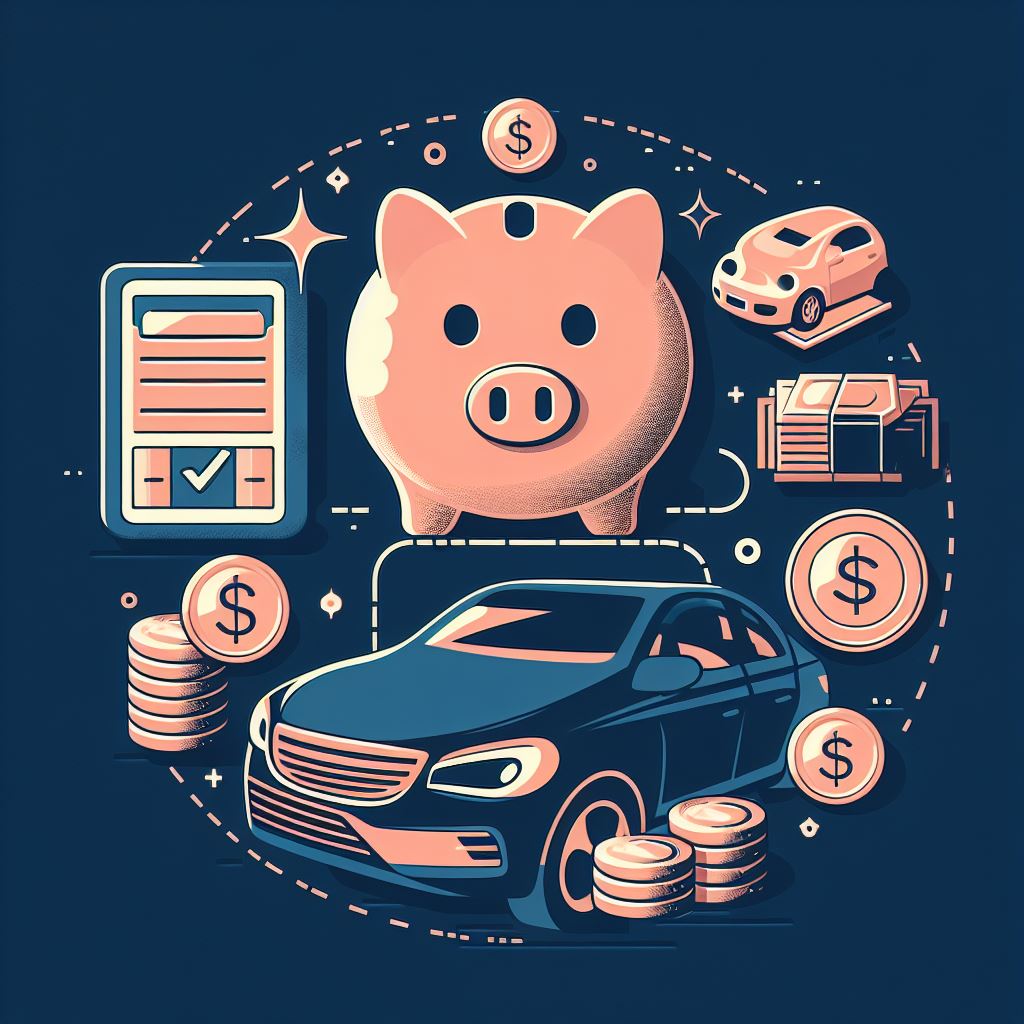How To Save Money For A Car
Last Updated on 27 January 2024 by Ryan Oldnall
Saving money for a car is a financial goal that is important for many as it is a ticket for freedom and flexibility. A car can provide essential mobility and convenience, making it a valuable asset in many aspects of life.
To achieve this goal, setting clear financial objectives is essential. Without a well-defined plan, it can be challenging to accumulate the necessary funds for a car purchase. So How To Save Money For A Car?
Assess Your Current Financial Situation
To begin your car-saving journey, start by assessing your current financial situation. Calculate your monthly income and expenses to gain a clear understanding of your financial standing.
This step will help you determine how much money you can realistically set aside for your car fund each month. By scrutinizing your financial situation, you can also identify areas where you can make cuts in your spending, enabling you to save more effectively.
Define Your Car Budget
Defining your car budget is a crucial step in this process. Begin by deciding on the type of car you want to purchase. Do you need a compact car for daily commuting or a SUV for family outings?
Research the average cost of the specific car model you desire, taking into account any variations in price due to features or the vehicle’s condition.
Additionally, consider other financial factors, such as insurance, on-road expenses, taxes, and ongoing maintenance, as these will impact your overall budget.
Create a Savings Plan
A savings plan serves as your roadmap to achieving your goal of buying a car. Start by setting a target date for when you want to make the car purchase.
This deadline will create a sense of urgency and motivation. Calculate the total amount of money you need to purchase the car. Then divide this number by the weeks between now and your target date.
This will help determine how much you need to save each week to reach this goal within your set time frame.
By breaking down your savings goal into manageable monthly contributions, you’ll ensure steady progress.

Open a Dedicated Savings Account
Choosing the right savings account is important for optimizing your savings. Look for a high-yield savings account that offers competitive interest rates.
This will help your money grow over time. To maintain consistency, automate weekly transfers from your primary account into your dedicated car savings account.
This automation ensures that you consistently contribute to your car fund, even if you might be tempted to spend the money elsewhere. Another great option is to have this savings account with another bank so it is not visible to you on a daily basis.
Reduce Debt
Before making a substantial purchase like a car, it’s wise to prioritize reducing high-interest debts.
Paying off outstanding balances, particularly on credit cards, will free up more money that can be channeled into your car fund.
Avoid accumulating new debts during your savings journey to prevent hindrances and additional financial burdens. Reducing debt not only makes it easier to save but also improves your overall financial health.
I cover these topics in greater detail in my articles, How To Save Money and What is good debt and bad debt.
Increase Your Income
Increasing your income is a vital step towards saving money for a car. Exploring part-time or casual job opportunities is one effective strategy.
You can seek out positions that fit your schedule, such as evening or weekend work, to supplement your regular income.
This additional income can be directly channeled into your car fund, accelerating your savings progress.
Another approach is finding ways to generate extra income beyond traditional employment. Consider freelancing, gig work, or online opportunities that align with your skills and interests. Creating a blog such as this does generate additional income!
These income streams can provide flexibility and the potential to earn more money, allowing you to save faster and meet your car savings goals sooner.
Cut Unnecessary Expenses
Cutting unnecessary expenses is a practical way to boost your car savings. Start by creating a budget that outlines your monthly income and all expenses, both essential and discretionary.
Tracking your spending enables you to identify areas where you can cut back without sacrificing your quality of life. Some great tips I share in my how to save money article are changing your shopping habits and switching up your TV subscriptions.
Once you’ve established a budget, focus on identifying non-essential expenses that can be eliminated or reduced.
This might include dining out less frequently, canceling unused subscriptions, or finding more cost-effective alternatives for daily expenses.
Redirecting the funds saved from these cutbacks into your car savings fund can significantly impact your ability to accumulate the necessary funds quickly. Most people want to know how to save money for a car quickly.
Look for Cost-Saving Measures
Saving money for a car isn’t just about earning more and spending less; it’s also about making wise financial choices.
One cost-saving measure is considering buying a used car instead of a new one. Used cars typically come at a lower price point and can still provide reliable transportation.
Obviously, the second-hand car market has shot up in recent times due to record-long waiting lists but they still offer potentially better value than a brand new car without the wait!
Researching fuel-efficient options is another way to save on ongoing expenses. Choosing a vehicle with better mileage can result in significant long-term savings. The cost of fuel has gone up like most things in recent times.
Automating monthly transfers to your car fund is a practical way to ensure consistent savings.
Setting up automatic transfers from your primary account to your dedicated car savings account aligns with the “set it and forget it” principle, helping you maintain discipline in your savings plan.
This automated approach ensures that a portion of your income is consistently allocated to your car fund, steadily progressing toward your target savings amount.
Stay Committed to Your Savings Plan
To successfully save money for your car, it’s important to stay committed to your savings plan.
Regularly reviewing your progress is essential. By monitoring your savings, you can track how close you are to your goal and identify any potential roadblocks. This will help you stay motivated and make adjustments if necessary.
Adjusting your plan as needed is a practical approach. Life is full of unexpected expenses, and sometimes your financial situation may change.
If you encounter unexpected costs or setbacks, don’t be discouraged. Instead, modify your savings plan to accommodate these changes. This flexibility will enable you to continue making progress towards your goal.
Consider Alternative Transportation
While you’re saving for your car, it’s worth considering alternative transportation options.
Explore public transportation or carpooling as viable alternatives to owning a car during your savings period. Public transportation can be cost-effective and environmentally friendly, while carpooling can help you share travel expenses with others.
Avoiding taxis and Ubers, whilst more convenient tends to cost a lot more in every part of the world.
The money saved by using alternative transportation such as public can be saved into your car fund, helping you reach your savings goal more quickly.
Remember that these alternatives may not be suitable for everyone, but they can be a practical choice while saving for your car.
Summary
Saving for a car or anything for that matter can seem like a long and exhausting process. The tips in this article, whilst not exhaustive provide good a foundation in your savings journey.
To keep yourself on track it is important to set practical and realistic goals. Both in terms of the car cost, savings required, and the time frame in which you want to achieve this.
If your goals are beyond your means or the time frame is too unrealistic, there is a high chance you will become disenchanted by the process and will lose motivation at the first hurdle.
Happy Saving!







